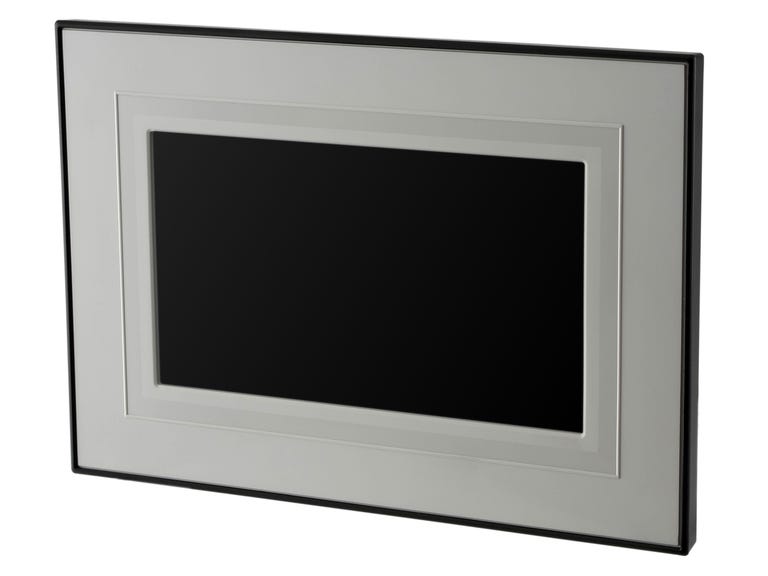 Why You Can Trust CNET
Why You Can Trust CNET Kodak EasyShare P720 review: Kodak EasyShare P720
Kodak EasyShare P720
Kodak offers several digital photo frames, including models that feature built-in wireless connectivity and even cutting-edge OLED display technology. But its P720, a 7-inch frame, is about as basic as you get and sits at the entry point of the Kodak line with a street price of less than $70.
The Good
The Bad
The Bottom Line
Some digital photo frames have real wood or metal finishes, but this is strictly a plastic affair. With its simple, slim, black border, the frame looks elegant enough from afar and comes with two stick-on decorative mattes (one is red, the other silver) that let you customize the frame's look. The kickstand doesn't swivel, but you do have the option of propping the frame up in a horizontal or vertical orientation. On the back of the frame there are keyhole slots for mounting the frame to a wall with screws along with a threaded tripod mount if you want to prop it up with a tripod.
In terms of features, the P720 is very basic. For starters, it comes with no memory; you have to provide your own memory card. You simply slip a MemoryStick, SD/SDHC, or xD-Picture Card in the slot at the top of the frame and a slideshow automatically begins. You can also connect a camera or flash memory storage device (a thumbdrive) directly to the frame via the USB connector. Interestingly, there's also a separate slot that's devoted to just SD/SDHC cards (the other memory card slot also accepts SD cards). You can attach multiple memory cards to the frame and copy photos from one memory card to another, or from your camera to a memory card.
This frame, like several of Kodak's other frames, is a Touch Border model, which means that you touch the bezel of the frame to access menus and settings. With this frame, the various touch points along the bottom and right side of the frame light up when you touch the bezel. You have to touch the border next to the icons that appear on the screen. For those used to dealing with a touch-screen display, this won't seem intuitive initially, but once you get used to it, the system works pretty well. (We've seen some comments about the Touch Border not being senior-friendly, but anybody who reads the instructions should be able to get the hang of it fairly quickly.)
As for resolution, you're looking at 480x234-pixel wide-screen display. Kodak calls it "vibrant." That may be so (you can adjust the brightness), but sharp it isn't--which is to be expected from a frame with a relatively low pixel count.
The frame displays only JPEG still images--no video or audio. For moving pictures you'll have to step up to one of Kodak's higher-end frames that also have small, built-in speakers for sound. Pretty much all you can do is set the types of transitions you want in the slideshow (nine options are available, including "random" and "none") and set a timer to activate the slideshow during certain hours (a clock is built into the unit). You can also set your pictures to display in their native 4:3 aspect ratio or have it fill the entire with a little on-the-fly cropping of the picture.
The images we looked at on the frame looked OK from a distance of 4 or 5 feet, though it has a very small dynamic range: whites get blown out and skin tones are a little off. Get closer, however, and your images can look a little soft and pixelated because there's just not a whole lot of resolution to work with (you can see individual pixels). As is the case with all these lower-resolution frames, close-ups look best; there's not a lot of detail in subjects standing farther back or background imagery. Also, you'll get stair-stepping (read: jagged edges) in curved lines, such as the profile of a subject's shoulder. Finally, though the frame can operate in vertical mode, because it's so small it has a narrower off-axis viewing angle than usual in this position; the picture completely inverts/disappears when viewed from the side.
In sum, the P720 is a basic photo frame that's designed to be relatively affordable and easy to use. For about $70, it's an OK value, but if you're looking for better image quality, we strongly recommend spending the extra dough and stepping up to a larger, higher-resolution model.


